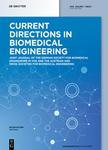版权所有:内蒙古大学图书馆 技术提供:维普资讯• 智图
内蒙古自治区呼和浩特市赛罕区大学西街235号 邮编: 010021
T=题名(书名、题名),A=作者(责任者),K=主题词,P=出版物名称,PU=出版社名称,O=机构(作者单位、学位授予单位、专利申请人),L=中图分类号,C=学科分类号,U=全部字段,Y=年(出版发行年、学位年度、标准发布年)
AND代表“并且”;OR代表“或者”;NOT代表“不包含”;(注意必须大写,运算符两边需空一格)
范例一:(K=图书馆学 OR K=情报学) AND A=范并思 AND Y=1982-2016
范例二:P=计算机应用与软件 AND (U=C++ OR U=Basic) NOT K=Visual AND Y=2011-2016


Biosensors are powerful tools with wide applications in basic research and biomedical diagnostics. In the last decades, the use of nanomaterials decorated with biological recognition units have attracted significant attention and reformed the field. However, this development requires substantial input from the chemical sciences.
In this context, semiconducting single-walled carbon nanotubes (SWCNTs) are versatile near infrared (NIR, 870 – 2400 nm) emitting fluorophores. They have been non-covalently modified to create sensors that change their fluorescence when interacting with biomolecules. However, non-covalent chemistry has several disadvantages and prevents a consistent way to signal transduction and rational design. Here, we introduce a widely applicable covalent approach to create molecular sensors without destroying the fluorescence in the NIR. For this purpose, a new class of quantum defects in the SWCNT lattice is used to bind biomolecules and to guarantee colloidal stability. To showcase the potential of this approach we demonstrate sensing for different classes of biomolecular analytes (nucleic acids, proteins as well as macromolecular complexes). We analyze sensitivity and selectivity of this recognition approach and present a straightforward way for the generation of novel sensors. In summary, we introduce a novel quantum defect-based covalent functionalization approach of fluorescent SWCNTs with great potential for biosensing.

Viral and microbiological infections are a major cause of death that burdens the infrastructure of health systems. To contain the spread of pathogens and assess available treatment options, a number of diagnostic methods have been developed. However, the development of diagnostic tests is typically time consuming and, in the light of current pandemics, the need for adaptable concepts has become more apparent.
For sensor applications that require a minimally invasive read out, optical systems offer a rapid detection of biomolecules with a high spatial and temporal resolution. Due to the reduced autofluorescence, absorption and scattering, the near-infrared (NIR, 870 – 2400 nm) tissue transparency window offers an improved signal-to-noise ratio. Biosensors that fluoresce in this region are therefore highly desirable for biological applications and single-walled carbon nanotubes (SWCNTs) have emerged as versatile NIR fluorescent building blocks in this context. Here, we report a biofunctionalization strategy for single walled carbon nanotube (SWCNT) based (bio-)sensors that uses a generic signal transduction mechanism for different recognition elements. It allows the detection of viral compounds in subnanomolar concentrations, which can be used to fingerprint them at 1020 nm in the near infrared. In summary, we present a concept that allows rapid exchange of recognition units and a straightforward method to detect pathogens.

电话和邮箱必须正确填写,我们会与您联系确认。
版权所有:内蒙古大学图书馆 技术提供:维普资讯• 智图
内蒙古自治区呼和浩特市赛罕区大学西街235号 邮编: 010021

暂无评论